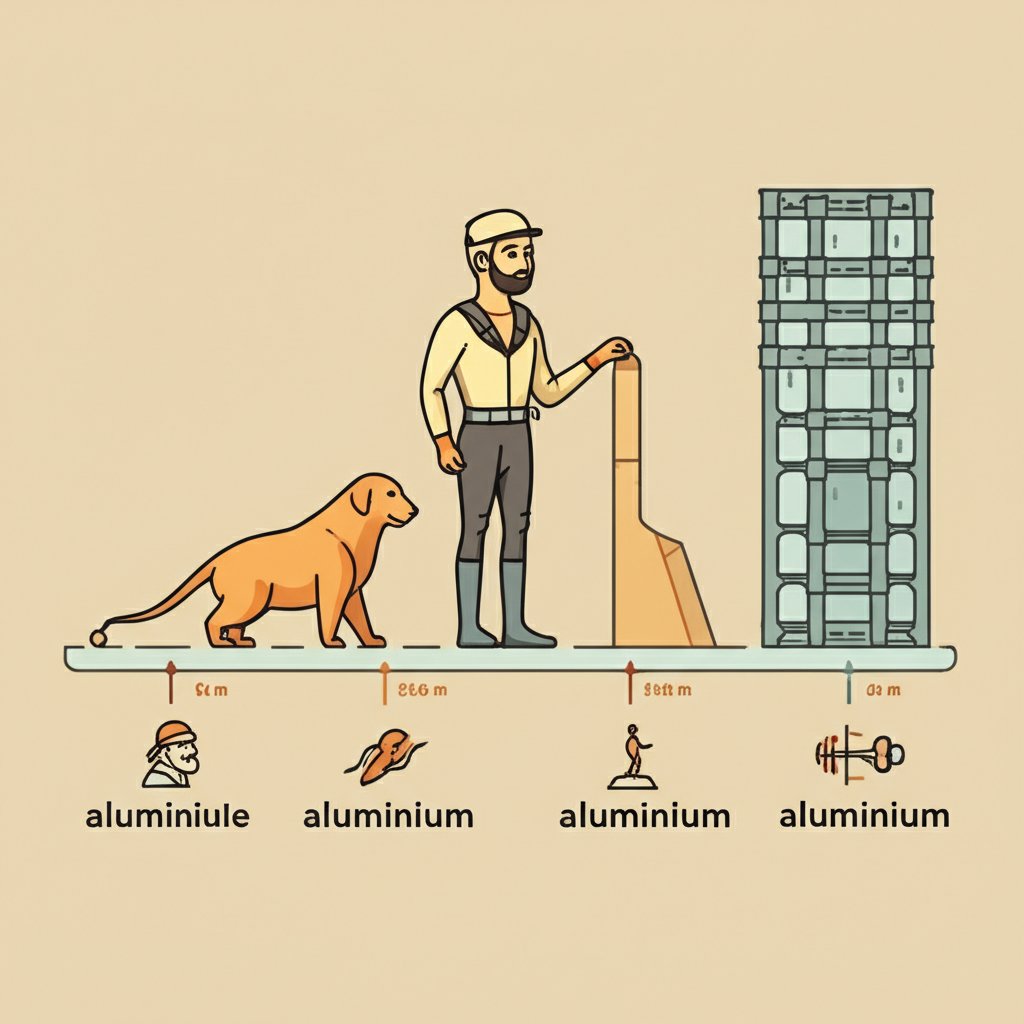
Have you ever paused while writing or speaking and wondered, “Is it aluminum or aluminium?” If so, you’re not alone. The debate over aluminium versus aluminum is one of the most common points of confusion for English speakers worldwide. You’ll see both spellings in textbooks, scientific papers, and product packaging, but which one is actually correct—and why does this difference exist in the first place?
The answer is surprisingly straightforward: both spellings are correct, but their usage depends on where you are. In American English, “aluminum” is the standard term, while British English (and most other forms of English outside North America) prefers “aluminium.” Despite the difference in spelling—and even a slight change in pronunciation—both words refer to the same chemical element, number 13 on the periodic table, which you’ll find in everything from soda cans to kitchen foil.
So, why does this single element have two names? The distinction isn’t just a matter of personal preference; it’s rooted in linguistic history and regional conventions. Over time, scientific organizations, dictionaries, and editors on both sides of the Atlantic have helped cement these standards, leading to the dual usage we see today. Whether you’re a student writing a research paper, a professional drafting technical documentation, or simply someone curious about language, understanding the difference between “aluminium” and “aluminum” can help you communicate more clearly and confidently.
In the following sections, we’ll explore each of these aspects in detail, unraveling the fascinating story behind aluminium vs aluminum and helping you navigate this quirky corner of the English language with ease.
Have you ever found yourself wondering, “Is it aluminum or aluminium—which is correct?” If so, you’re in good company. This spelling conundrum has puzzled students, professionals, and even scientists for generations. The short answer is: both spellings are correct, but their usage depends on where—and sometimes how—you’re communicating. Let’s break down why this variation exists and what it means for you.
Imagine reading a scientific article from the United States and seeing "aluminum," then flipping to a British publication and finding "aluminium." Sounds complex? The difference is rooted in the conventions of American versus British English. Here’s how it plays out:
So, is it aluminum or aluminium? The answer depends on your audience and the regional standards you’re following. There’s no universal “right” or “wrong”—context is key.
Still wondering, "aluminium or aluminum, which is correct?" The story gets even more interesting when you consider how scientific organizations and major dictionaries have influenced these standards.
These decisions have helped solidify the spelling you’ll encounter depending on where you live or work. For instance, if you’re writing for an American audience, "aluminum" is expected. If your readers are in the UK or Australia, "aluminium" is the way to go.
Ultimately, the confusion over "aluminum" vs "aluminium" isn’t about one being more correct than the other. Instead, it’s about respecting language conventions and ensuring clarity for your audience. Here’s a quick checklist to guide your choice:
As we explore the historical roots of each spelling in the next section, you’ll see how tradition, science, and language have all played a role in shaping this unique debate.

When you open a textbook or unwrap a sandwich in the United States, you’ll almost always see the word “aluminum.” But how did this spelling become the North American standard—and what’s the real story behind its origins? Let’s unravel the aluminum aluminium etymology and discover which came first: aluminum or aluminium.
Imagine it’s the early 1800s, and British chemist Sir Humphry Davy is making waves in the world of science. In 1808, Davy identified a new metal in the compound alum and initially proposed the name “alumium.” This first attempt was a direct nod to the Latin word alumina, the oxide of the metal, combined with the -ium suffix common to other elements. However, Davy didn’t stick with this name for long. By 1812, in his book Elements of Chemical Philosophy, he shifted to “aluminum,” a streamlined version that reflected his evolving approach to element naming (source).
This early adoption of “aluminum” set the stage for a unique linguistic journey, especially in North America.
But the story doesn’t end with Davy. In 1828, Noah Webster’s American Dictionary of the English Language listed “aluminum” as the name for the metal’s base. This influential dictionary helped cement the spelling in the United States, even as some scientists and publications in Britain and elsewhere began favoring the alternative “aluminium” to match the pattern of other element names like “sodium” and “potassium.”
Over the next century, both “aluminum” and “aluminium” were used in scientific circles. However, by the early 20th century, the American Chemical Society (ACS) made a decisive move. In 1925, the ACS officially adopted “aluminum” for all its publications and communications, solidifying its place as the American standard (source).
If you’re wondering why “aluminum” became dominant in the U.S. and Canada, the answer lies in a mix of linguistic tradition and institutional authority. American dictionaries, industry leaders, and scientific organizations all favored the shorter, simpler spelling. Over time, this consistent usage filtered into textbooks, product labels, and everyday speech, making “aluminum” the go-to term across North America.
Meanwhile, “aluminium” gained traction in the UK and much of the rest of the world, but that’s a story for the next section. For now, remember: in the American context, “aluminum” isn’t just a spelling—it’s a reflection of scientific history, linguistic preference, and the influence of authoritative bodies. This unique path is what makes the aluminum aluminium etymology so intriguing for language lovers and science enthusiasts alike.
Next, we’ll dive into how “aluminium” emerged as the preferred spelling internationally, and why the two versions continue to coexist today.
Ever wondered why “aluminium” became the spelling of choice in so much of the world? If you’ve noticed the extra “i” and wondered whether it’s just a British quirk, you’re not alone. The aluminium aluminum etymology is a fascinating journey through scientific tradition, linguistic patterns, and international consensus. Let’s explore how “aluminium” rose to prominence and why it’s more than just a matter of national preference.
When you look at the periodic table, you’ll notice a pattern: most metallic elements have names ending in “-ium”—like sodium, potassium, calcium, and magnesium. This isn’t a coincidence. The “-ium” ending signals a metallic element, giving it a sense of scientific consistency and classical heritage. In the early 19th century, British chemists recognized that “aluminum,” as coined by Sir Humphry Davy, didn’t quite fit this pattern. To align with the established convention, they began using “aluminium.”
Imagine reading a chemistry textbook in London or Sydney—“aluminium” immediately signals a metallic element, just like its peers. This subtle alignment helped the spelling gain favor in academic and scientific circles outside North America (source).
Fast forward to the late 20th century. As international communication in science grew, the need for standardized terminology became more pressing. In 1990, the International Union of Pure and Applied Chemistry (IUPAC) officially adopted “aluminium” as the standard name for element 13. This move wasn’t just about spelling—it was about unifying scientific language for clarity and global collaboration.
For scientists, educators, and manufacturers, this standardization means fewer misunderstandings and greater consistency in research, trade, and education. If you’re working with international partners or publishing scientific work, “aluminium” is almost always the expected term.
So, does the spelling really matter for businesses and manufacturers? Absolutely. Companies that serve global markets need to be mindful of regional preferences and international standards. For example, global manufacturers like Shengxin Aluminum ensure their product labeling, technical documentation, and certifications use “aluminium” to align with IUPAC and meet the expectations of clients in the UK, EU, Australia, and beyond. This attention to detail supports smoother trade, regulatory compliance, and clearer communication across borders.
Imagine you’re sourcing aluminium profiles for a construction project in Europe or Australia—seeing “aluminium” on technical specs reassures you that the product aligns with familiar standards. This adaptability is key for companies that want to thrive in the global marketplace.
In summary, the widespread adoption of “aluminium” is a testament to the power of scientific tradition and international cooperation. The “-ium” suffix isn’t just a matter of spelling—it reflects a shared commitment to clarity, consistency, and quality in science and industry. As you continue exploring the history and impact of this versatile metal, you’ll see that what might seem like a simple letter actually tells a story about global standards and the evolution of language.
Next, we’ll look at the key milestones that led to the divergence of these spellings and how influential decisions shaped the naming saga of this essential element.

Ever wondered which came first: aluminum or aluminium? The answer isn’t as simple as you might think. The story behind these two spellings is filled with scientific discovery, linguistic evolution, and a tug-of-war between tradition and innovation. Let’s break down the major milestones that shaped the global divide—so you can see exactly how one element ended up with two distinct names.
Imagine a timeline stretching from the early 1800s to today. Here’s how the journey unfolded:
For a deeper dive into this fascinating evolution, check out the detailed chronology and analysis in this comprehensive blog from Shengxin Aluminum.
| Year | Event/Publication | Spelling Used | Region/Impact |
|---|---|---|---|
| 1808 | Davy's Discovery | Alumium | UK/Scientific Circles |
| 1812 | Elements of Chemical Philosophy (Davy) | Aluminum | UK/International Science |
| 1812–1817 | British Scientific Journals | Aluminium | UK/Europe |
| 1828 | Noah Webster's Dictionary | Aluminum | United States |
| 1925 | ACS Standardization | Aluminum | North America |
| 1990 | IUPAC Adoption | Aluminium (primary), Aluminum (variant) | International |
So, which came first—aluminum or aluminium? Technically, "alumium" was the first name, quickly revised to "aluminum" by Davy. The "aluminium" spelling soon , gaining favor for its scientific consistency. Over time, these choices were reinforced by influential dictionaries, scientific societies, and global standards. Today, the spelling you encounter depends on where you are and the context—both are correct, and both carry a rich legacy of scientific and cultural evolution (source).
Understanding this history helps you navigate international communication with confidence. In the next section, we’ll see how these spelling differences also affect pronunciation, shaping the way professionals and everyday speakers discuss this essential element around the world.
Ever paused in conversation and wondered, "How do you pronounce aluminum or aluminium correctly?" If so, you’re not alone! The spelling debate isn’t just about letters—it also shapes how the word sounds in different parts of the world. Let’s break down the subtle, yet important, differences in pronunciation between American and British/International English, so you’ll never hesitate again when you need to say this essential element’s name.
Imagine you’re chatting with a colleague from London or New York. You’ll notice that, much like the spelling, the way people say the word changes depending on their region. The difference comes down to syllable count, stress, and the presence of an extra vowel sound in the British/International version. Here’s how it works:
Think of it this way: In American English, the word is shorter and snappier, while the British version adds an extra "i" and syllable, giving it a more rhythmic, flowing sound.
To help you master the correct pronunciation for any context, here’s a quick reference:
| Spelling | Region | Phonetic Spelling | Syllables | Primary Stress |
|---|---|---|---|---|
| Aluminum | US, Canada |
uh-LOO-muh-num /əˈluː.mə.nəm/ |
4 | LOO |
| Aluminium | UK, International |
al-yuh-MIN-ee-um /ˌæl.jəˈmɪn.i.əm/ |
5 | MIN |
So, when considering aluminum or aluminium pronunciation, remember that both are correct within their regional context. If you’re working across borders or presenting to an international audience, it helps to match your pronunciation—and spelling—to your listeners’ expectations. Next, we’ll explore how these regional preferences play out on a global scale, with a closer look at where each spelling is standard.

Ever traveled abroad and noticed "aluminium" on a soda can, or found "aluminum" in a science textbook? If so, you’ve experienced firsthand how regional language standards shape the way we refer to this essential metal. Sounds confusing? Let’s break down where each spelling is used, and why understanding these preferences matters—especially if you work, study, or communicate internationally.
Imagine you’re shopping for building materials in Toronto, reading a research paper from Sydney, or browsing technical specifications in London. You’ll quickly spot the spelling difference. Here’s how the world divides:
| Country/Region | Preferred Spelling | Notes |
|---|---|---|
| United States | Aluminum | Standard in education, industry, and government; used in all official publications and product labeling. |
| Canada | Aluminum | "Aluminum" is dominant, though "aluminium" occasionally appears in academic or Commonwealth contexts. For aluminium vs aluminum Canada, the American spelling prevails in most sectors. |
| United Kingdom | Aluminium | Official and universal in all forms of writing, education, and industry. |
| Australia & New Zealand | Aluminium | "Aluminium" is standard in textbooks, technical documents, and product packaging. |
| European Union | Aluminium | Used in all official documents, scientific literature, and product standards. |
| India, South Africa, Other Commonwealth Countries | Aluminium | "Aluminium" is taught in schools and used in commerce and government. |
| International Scientific Bodies (IUPAC) | Aluminium | "Aluminium" is the internationally recognized standard, though "aluminum" is accepted as a regional variant for North America. |
Let’s say you’re a manufacturer exporting to Canada. You might wonder: "Should I use aluminum or aluminium in my product documentation?" While Canada uses British spelling for many words, "aluminum" is the clear standard here—reflecting a unique blend of American influence and Commonwealth heritage. This subtle distinction can impact how your products are perceived and whether your documentation meets local expectations (source).
Wherever you’re working or writing, matching your spelling to your audience is a simple way to enhance clarity and professionalism. If you’re not sure which to use, check local style guides or look at reputable publications from your target region. Consistency throughout your document or product labeling is just as important as choosing the correct variant.
As we move forward, you’ll see how these spelling choices can have practical implications in academic writing, technical documentation, and even SEO—making it more than just a matter of language, but also of effective global communication.
Ever wondered if using "aluminium" instead of "aluminum" (or vice versa) could really make a difference? It might seem like a small detail, but the spelling you choose can have a big impact in certain contexts. Imagine submitting a research paper, launching a product internationally, or optimizing your website for search engines. In each of these cases, picking the right variant isn’t just about following rules—it’s about clarity, professionalism, and even discoverability.
Sounds trivial? Not quite. The aluminium vs aluminum difference goes beyond personal preference. Consistency in spelling helps avoid confusion, ensures your message is understood, and demonstrates attention to detail. Here’s where it really counts:
| Context | Preferred Spelling | Why It Matters |
|---|---|---|
| Academic writing (US) | Aluminum | Aligns with institutional standards; enhances credibility. |
| Academic writing (UK/International) | Aluminium | Matches journal style guides; avoids editorial corrections. |
| Technical manuals for export | Depends on region | Reduces misinterpretation; meets regulatory requirements. |
| SEO/website content | Region-specific | Improves search rankings; targets the right audience. |
| Product packaging | Region-specific | Builds consumer trust; ensures compliance with labeling laws. |
| Educational resources | Region-specific | Supports learning; avoids confusion for students. |
In short, while both spellings are correct, using the appropriate one for your context helps you communicate clearly and professionally. Next, let’s look at how these choices play out in scientific fields, product labeling, and industry standards—where the right spelling can be a mark of quality and global awareness.

Ever wondered how the spelling debate plays out in real-world products or scientific contexts? When you shop for an aluminium speaker / aluminum speaker, or compare aluminium vs aluminum alloy specifications, you’re tapping into a global industry shaped by both language and science. Let’s break down how these terms are used in laboratories, on product labels, and within international standards—and why it matters for manufacturers and consumers alike.
First, let’s clear up any confusion: in the world of science, the International Union of Pure and Applied Chemistry (IUPAC) sets the official terminology. Since 1990, IUPAC has recognized “aluminium” as the standard name for element 13 on the periodic table (source). However, it also allows “aluminum” as an accepted variant in North America. This dual recognition ensures that scientific publications, research, and technical documentation remain clear and accessible, no matter where you are in the world.
When it comes to manufacturing and industry, the terminology can affect everything from technical documents to marketing. But here’s the key: whether you see “aluminium” or “aluminum,” the standards and properties are the same. For example, ASTM and ISO standards cover both spellings in their documentation:
These standards ensure that a 6061 or 7075 alloy will perform the same, whether it’s called “aluminum” in the US or “aluminium” in Europe (Metalpedia).
Imagine you’re shopping for an aluminium speaker / aluminum speaker. The difference in spelling on the packaging simply reflects the manufacturer’s target market—not a difference in material quality. The same applies to alloys: when comparing aluminium vs aluminum alloy grades like 6061, 5052, or 7075, the technical data sheets will match international standards, regardless of spelling (reference).
With international markets demanding both technical excellence and linguistic awareness, leading manufacturers must be adaptable. Companies like Shengxin Aluminum exemplify this approach. By aligning their product documentation, certifications, and labeling with regional standards—using “aluminium” or “aluminum” as needed—they ensure seamless compliance and communication worldwide.
So, next time you encounter “aluminium” or “aluminum” on a product or in a technical manual, you’ll know it’s more than just a spelling choice. It’s a reflection of global standards, regional preferences, and the commitment of manufacturers like Shengxin Aluminum to serve clients everywhere with clarity and quality. As we wrap up, keep in mind that, regardless of the label, the material’s performance is what truly counts—making aluminium versus aluminum a story of unity in diversity.
Ever caught yourself hesitating between "aluminum" and "aluminium" in a report or conversation? You’re not alone—and now, you know why. Through this exploration of aluminum aluminium, you’ve seen that the debate isn’t about which spelling is right or wrong, but about understanding history, regional norms, and the practicalities of global communication.
Imagine working on a multinational project, publishing research, or sourcing materials for a construction job. Using the correct regional term isn’t just a matter of etiquette—it can affect clarity, professionalism, and even compliance with local regulations. When in doubt, ask yourself:
This simple checklist ensures your communication is clear, respectful, and effective—no matter where you are.
The story of aluminum and aluminium is a testament to how language, science, and culture evolve together. Rather than seeing the dual spelling as a source of confusion, think of it as a reminder of English’s rich diversity and adaptability. Whether you write "aluminum" or "aluminium," what matters most is the quality and reliability behind the word.
When it comes to sourcing high-quality aluminium profiles or components for your next project, choose a partner that understands both the science and the language of global industry—like Shengxin Aluminum. With a commitment to international standards and a proven track record across markets, Shengxin ensures you receive the best, no matter which spelling you prefer.
So, next time you face the aluminum aluminium question, remember: both are right. Let your context—and your commitment to quality—guide the choice.
Both 'aluminium' and 'aluminum' are correct spellings. 'Aluminum' is used in the United States and Canada, while 'aluminium' is standard in the UK, Europe, Australia, and most other English-speaking countries. The choice depends on regional language conventions and the context in which you are communicating.
The dual spellings originated from early naming decisions by British chemist Sir Humphry Davy and later adaptations by scientific bodies. Over time, 'aluminum' became standard in North America, while 'aluminium' was adopted elsewhere for consistency with other element names. Influential organizations and dictionaries helped solidify these preferences.
In the United States, 'aluminum' is the accepted spelling in all official, academic, and industrial contexts. This spelling is also used in Canada, though 'aluminium' may occasionally appear in academic settings influenced by British English.
No, the spelling difference does not affect the chemical element or its properties. Whether labeled as 'aluminum' or 'aluminium,' it refers to the same element (number 13 on the periodic table) with identical uses in products, alloys, and industry standards worldwide.
Use 'aluminum' for American or Canadian audiences and 'aluminium' for UK, European, Australian, or international contexts. In technical documentation, academic writing, or product labeling, matching the regional standard ensures clarity and professionalism. Manufacturers like Shengxin Aluminum tailor their language to meet these expectations in global markets.
 un service en ligne
un service en ligne 0086 136 3563 2360
0086 136 3563 2360 sales@sxalu.com
sales@sxalu.com +86 136 3563 2360
+86 136 3563 2360